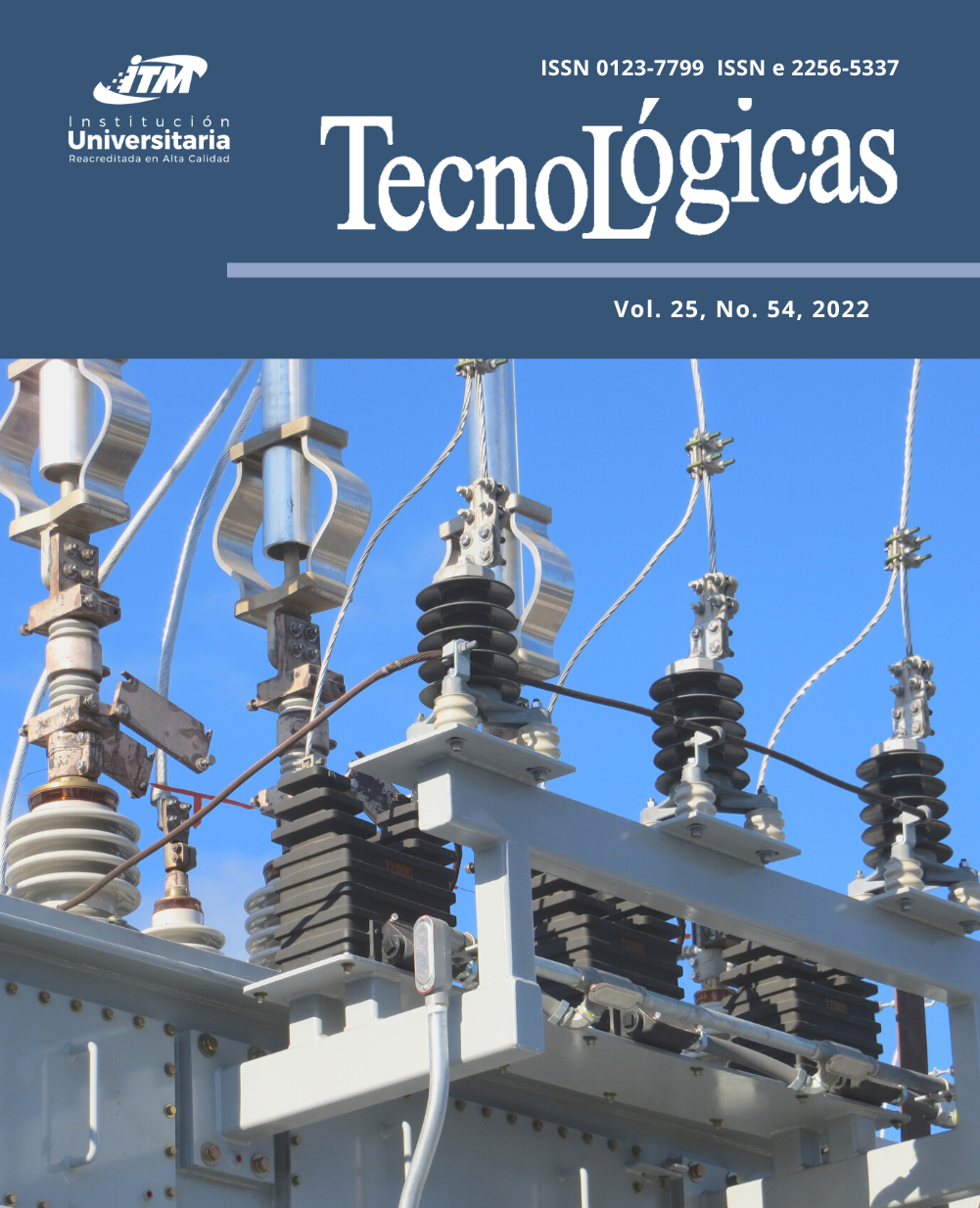Electrospinning húmedo y sus aplicaciones: una revisión
Resumen
En el electrospinning húmedo, se deposita una solución de polímero natural o sintético sobre un coagulante líquido no disolvente utilizado como colector. Esta técnica puede crear andamios de nanofibras en 3D con mejores propiedades (por ejemplo, porosidad y alta superficie) que las de los andamios tradicionales en 2D producidos por electrospinning estándar. Gracias a estas características, el electrospinning húmedo puede emplearse en una amplia gama de aplicaciones industriales y de ingeniería de tejidos. Esta revisión pretende ampliar el panorama de esta técnica, sus posibles campos de actuación y su gama de materiales habituales. Además, también se discuten sus tendencias futuras. En este estudio, revisamos los artículos sobre este método publicados entre 2017 y 2021 para establecer el estado del arte del electrospinning húmedo y sus aplicaciones más importantes en ingeniería de tejidos cardíacos, cartilaginosos, hepáticos, apósitos para heridas, cutáneos, neuronales, óseos y musculares esqueléticos. Adicionalmente, examinamos sus aplicaciones industriales en la purificación del agua, los filtros de aire, la energía, los sensores biomédicos y los textiles. Los principales resultados de esta revisión indican que los andamios 3D para aplicaciones de ingeniería tisular son biocompatibles; imitan la matriz extracelular (MEC); permiten la viabilidad y diferenciación de las células madre; y tienen una alta porosidad, lo que proporciona una mayor infiltración celular en comparación con los andamios 2D. Por último, descubrimos que, en las aplicaciones industriales del electrospinning húmedo: (1) los aditivos mejoran el rendimiento de los polímeros puros; (2) la concentración de la solución influye en la porosidad y el empaquetamiento de las fibras; (3) la velocidad de flujo, el voltaje y la distancia modifican la morfología de las fibras; (4) la tensión superficial del coagulante no solvente sobre el que se depositan las fibras tiene un efecto sobre su porosidad, compactación y propiedades mecánicas; y (5) el tiempo de deposición define el espesor del andamio.
Referencias bibliográficas
D. I. Braghirolli; D. Steffens; P. Pranke, “Electrospinning for regenerative medicine: a review of the main topics”, Drug Discov. Today, vol. 19, no. 6, pp. 743–753, Jun. 2014. https://doi.org/10.1016/j.drudis.2014.03.024
N. Okutan; P. Terzi; F. Altay, “Affecting parameters on electrospinning process and characterization of electrospun gelatin nanofibers”, Food Hydrocoll., vol. 39, pp. 19–26, Aug. 2014. https://doi.org/10.1016/j.foodhyd.2013.12.022
A. Barhoum; K. Pal; H. Rahier; H. Uludag; I. S. Kim; M. Bechelany, “Nanofibers as new-generation materials: From spinning and nano-spinning fabrication techniques to emerging applications”, Appl. Mater. Today, vol. 17, pp. 1–35, Dec. 2019. https://doi.org/10.1016/j.apmt.2019.06.015
W. Lin; M. Chen; T. Qu; J. Li; Y. Man, “Three‐dimensional electrospun nanofibrous scaffolds for bone tissue engineering”, J. Biomed. Mater. Res. Part B Appl. Biomater., vol. 108, no. 4, pp. 1311–1321, May 2020. https://doi.org/10.1002/jbm.b.34479
M. Rahmati et al., “Electrospinning for tissue engineering applications”, Prog. Mater. Sci., vol. 117, p. 100721, Apr. 2021. https://doi.org/10.1016/j.pmatsci.2020.100721
A. Khamhaengpol; S. Siri, “Composite Electrospun Scaffold Derived from Recombinant Fibroin of Weaver Ant (Oecophylla smaragdina) as Cell-Substratum”, Appl. Biochem. Biotechnol., vol. 183, no. 1, pp. 110–125, Sep. 2017. https://doi.org/10.1007/s12010-017-2433-4
M. M. Sayed et al., “Enhancing mechanical and biodegradation properties of polyvinyl alcohol/silk fibroin nanofibers composite patches for Cardiac Tissue Engineering”, Mater. Lett., vol. 255, p. 126510, Nov. 2019. https://doi.org/10.1016/j.matlet.2019.126510
N. Rahimi Tanha; M. Nouri, “An experimental study on the coaxial electrospinning of silk fibroin/poly(vinyl alcohol)–salicylic acid core-shell nanofibers and process optimization using response surface methodology”, Journal of Industrial Textiles, vol. 48, no. 5, pp. 884–903, Nov. 2018. https://journals.sagepub.com/doi/10.1177/1528083717747334
R. Giovanni; U. A. Wibowo; H. Judawisastra; A. Barlian, “Growth of Human Dermal Fibroblasts on Polyvinyl Alcohol-Silk Fibroin Nanofiber Scaffold”, J. Math. Fundam. Sci., vol. 51, no. 3, pp. 294–308, Dec. 2019. https://doi.org/10.5614/j.math.fund.sci.2019.51.3.7
C. M. Srivastava; R. Purwar; A. P. Gupta, “Enhanced potential of biomimetic, silver nanoparticles functionalized Antheraea mylitta (tasar) silk fibroin nanofibrous mats for skin tissue engineering”, Int. J. Biol. Macromol., vol. 130, pp. 437–453, Jun. 2019. https://doi.org/10.1016/j.ijbiomac.2018.12.255
M. Joshi; A. Bhattacharyya, “Nanotechnology – a new route to high-performance functional textiles”, Text. Prog., vol. 43, no. 3, pp. 155–233, Sep. 2011. https://doi.org/10.1080/00405167.2011.570027
B. Sun et al., “Advances in three-dimensional nanofibrous macrostructures via electrospinning”, Prog. Polym. Sci., vol. 39, no. 5, pp. 862–890, May 2014. https://doi.org/10.1016/j.progpolymsci.2013.06.002
M. L. Mejía Suaza; M. E. Moncada; C. P. Ossa-Orozco, “Characterization of Electrospun Silk Fibroin Scaffolds for Bone Tissue Engineering: A Review”, TecnoLógicas, vol. 23, no. 49, pp. 33–51, Sep. 2020. https://doi.org/10.22430/22565337.1573
A. K. Figen, “History, Basics, and Parameters of Electrospinning Technique”, Electrospun Materials and Their Allied Applications, pp. 53–69, 2020. https://doi.org/10.1002/9781119655039.ch2
J. Xue; T. Wu; Y. Dai; Y. Xia, “Electrospinning and Electrospun Nanofibers: Methods, Materials, and Applications”, Chem. Rev., vol. 119, no. 8, pp. 5298–5415, Apr. 2019. https://doi.org/10.1021/acs.chemrev.8b00593
N. Bhardwaj; S. C. Kundu, “Electrospinning: A fascinating fiber fabrication technique”, Biotechnol. Adv., vol. 28, no. 3, pp. 325–347, May-Jun. 2010. https://doi.org/10.1016/j.biotechadv.2010.01.004
X. Wang; T. Lin, Needleless Electrospinning of Nanofibers. Jenny Stanford Publishing, 2013. https://doi.org/10.1201/b15489
J. He; Y. Zhou, “Multineedle Electrospinning” in Electrospinning: Nanofabrication and Applications, Elsevier, 2019, pp. 201–218. https://doi.org/10.1016/B978-0-323-51270-1.00006-6
G. Kabay; C. Demirci; G. Kaleli Can; A. E. Meydan; B. G. Daşan; M. Mutlu, “A comparative study of single-needle and coaxial electrospun amyloid-like protein nanofibers to investigate hydrophilic drug release behavior”, Int. J. Biol. Macromol., vol. 114, pp. 989–997, Jul. 2018. https://doi.org/10.1016/j.ijbiomac.2018.03.182
Y. E. Kiyak; E. Cakmak, “Nanofiber Production Methods”, Electronic Journal of Vehicle Technologies/Tasit Teknolojileri Elektronik Dergisi, vol. 8, no. 3, pp. 49–60, 2014. https://docplayer.net/35000934-Nanofiber-production-methods-nanolif-uretim-yontemleri.html
D. M. dos Santos; D. S. Correa; E. S. Medeiros; J. E. Oliveira; L. H. C. Mattoso, “Advances in Functional Polymer Nanofibers: From Spinning Fabrication Techniques to Recent Biomedical Applications”, ACS Appl. Mater. Interfaces, vol. 12, no. 41, pp. 45673–45701, Sep. 2020. https://doi.org/10.1021/acsami.0c12410
M. B. Taskin; L. H. Klausen; M. Dong; M. Chen, “Emerging wet electrohydrodynamic approaches for versatile bioactive 3D interfaces”, Nano Res., vol. 13, no. 2, pp. 315–327, Feb. 2020. https://doi.org/10.1007/s12274-020-2635-x
D. Puppi; F. Chiellini, “ “Wet-spinning of biomedical polymers: from single-fibre production to additive manufacturing of three-dimensional scaffolds”, Polym. Int., vol. 66, no. 12, pp. 1690–1696, Dec. 2017. https://doi.org/10.1002/pi.5332
H. El-sayed; C. Vineis; A. Varesano; S. Mowafi; R. A. Carletto; C. Tonetti; M. Abou Taleb, “A critique on multi-jet electrospinning : State of the art and future outlook”, Nanotechnology Reviews, vol. 8, no. 1, pp. 236–245, 2019.
IGTPAN, “Technologies employed in the manufacture of acrylic fibers”, 2016. http://www.igtpan.com/Ingles/tecnologia-fibra.asp
A. Maio; M. Gammino; E. F. Gulino; B. Megna; P. Fara; R. Scaffaro, “Rapid One-Step Fabrication of Graphene Oxide-Decorated Polycaprolactone Three-Dimensional Templates for Water Treatment”, ACS Appl. Polym. Mater., vol. 2, no. 11, pp. 4993–5005, Sep. 2020. https://doi.org/10.1021/acsapm.0c00852
F. Naghizadeh; A. Solouk; S. B. Khoulenjani, “Osteochondral scaffolds based on electrospinning method: General review on new and emerging approaches”, Int. J. Polym. Mater. Polym. Biomater., vol. 67, no. 15, pp. 913–924, Oct. 2018.https://doi.org/10.1080/00914037.2017.1393682
F. Mokhtari; M. Salehi; F. Zamani; F. Hajiani; F. Zeighami; M. Latifi, “Advances in electrospinning: The production and application of nanofibres and nanofibrous structures”, Text. Prog., vol. 48, no. 3, pp. 119–219, Jul. 2016. https://doi.org/10.1080/00405167.2016.1201934
W. Yang; H. Yu; M. Zhu; H. Bai; Y. Chen, “Poly(m‐Phenylene Isophthalamide) Ultrafine Fibers from an Ionic Liquid Solution by Dry‐Jet‐Wet‐Electrospinning”, J. Macromol. Sci. Part B, vol. 45, no. 4, pp. 573–579, Aug. 2006. https://doi.org/10.1080/00222340600770129
C. Kim; S. Joshi; G. Cauwenberghs, “Patent Application Publication: US 2019 / 0253069 A1”, vol. 1, pp. 1–10, 2019. https://patents.google.com/patent/US20190046689A1/en?oq=11%2f825%2c540
M. Rafiei; E. Jooybar; M. J. Abdekhodaie; M. Alvi, “Construction of 3D fibrous PCL scaffolds by coaxial electrospinning for protein delivery”, Mater. Sci. Eng. C, vol. 113, p. 110913, Aug. 2020. https://doi.org/10.1016/j.msec.2020.110913
Y. Zhou; Z. Hu; D. Du; G. Z. Tan, “The effects of collector geometry on the internal structure of the 3D nanofiber scaffold fabricated by divergent electrospinning”, Int. J. Adv. Manuf. Technol., vol. 100, no. 9–12, pp. 3045–3054, Feb. 2019. https://doi.org/10.1007/s00170-018-2899-4
A. Sonseca et al., “Architectured helically coiled scaffolds from elastomeric poly(butylene succinate) (PBS) copolyester via wet electrospinning”, Mater. Sci. Eng. C, vol. 108, p. 110505, Mar. 2020. https://doi.org/10.1016/j.msec.2019.110505
S. S. Majidi; P. Slemming-Adamsen; M. Hanif; Z. Zhang; Z. Wang; M. Chen, “Wet electrospun alginate/gelatin hydrogel nanofibers for 3D cell culture”, Int. J. Biol. Macromol., vol. 118, pp. 1648–1654, Oct. 2018. https://doi.org/10.1016/j.ijbiomac.2018.07.005
M. K. Krishnamoorthi et al., “Robust Fabrication of Composite 3D Scaffolds with Tissue-Specific Bioactivity: A Proof-of-Concept Study”, ACS Appl. Bio Mate., vol. 3, no. 8, pp. 4974–4986, Aug. 2020. https://doi.org/10.1021/acsabm.0c00310
Y. Liu; A. Nguyen; A. Allen; J. Zoldan; Y. Huang; J. Y. Chen, “Regenerated cellulose micro-nano fiber matrices for transdermal drug release”, Mater. Sci. Eng. C, vol. 74, pp. 485–492, May 2017. https://doi.org/10.1016/j.msec.2016.12.048
O. C. Gunes; A. Z. Albayrak; S. Tasdemir; A. Sendemir, “Wet-electrospun PHBV nanofiber reinforced carboxymethyl chitosan-silk hydrogel composite scaffolds for articular cartilage repair”, J. Biomater. Appl., vol. 35, no. 4–5, pp. 515–531, Oct. 2020. https://doi.org/10.1177/0885328220930714
Y. Li et al., “Cell-free 3D wet-electrospun PCL/silk fibroin/Sr2+ scaffold promotes successful total meniscus regeneration in a rabbit model”, Acta Biomater., vol. 113, pp. 196–209, Sep. 2020. https://doi.org/10.1016/j.actbio.2020.06.017
A. F. Girão; Â. Semitela; G. Ramalho; A. Completo; P. A. A. P. Marques, “ “Mimicking nature: Fabrication of 3D anisotropic electrospun polycaprolactone scaffolds for cartilage tissue engineering applications”, Compos. Part B Eng., vol. 154, pp. 99–107, Dec. 2018. https://doi.org/10.1016/j.compositesb.2018.08.001
P. Das; M. D. DiVito; J. A. Wertheim; L. P. Tan, “Collagen-I and fibronectin modified three-dimensional electrospun PLGA scaffolds for long-term in vitro maintenance of functional hepatocytes”, Mater. Sci. Eng. C, vol. 111, p. 110723, Jun. 2020. https://doi.org/10.1016/j.msec.2020.110723
J. H. Brown; P. Das; M. D. DiVito; D. Ivancic; L. P. Tan; J. A. Wertheim, “Nanofibrous PLGA electrospun scaffolds modified with type I collagen influence hepatocyte function and support viability in vitro”, Acta Biomater., vol. 73, pp. 217–227, Jun. 2018. https://doi.org/10.1016/j.actbio.2018.02.009
M. Naseri-Nosar; S. Farzamfar; M. Salehi; A. Vaez; R. Tajerian; M. Azami, “Erythropoietin/aloe vera-releasing wet-electrospun polyvinyl alcohol/chitosan sponge-like wound dressing: In vitro and in vivo studies”, J. Bioact. Compat. Polym., vol. 33, no. 3, pp. 269–281, May 2018. https://doi.org/10.1177/0883911517731793
M. N. Nosar; M. Salehi; S. Ghorbani; S. P. Beiranvand; A. Goodarzi; M. Azami, “Characterization of wet-electrospun cellulose acetate based 3-dimensional scaffolds for skin tissue engineering applications: influence of cellulose acetate concentration”, Cellulose, vol. 23, no. 5, pp. 3239–3248, Oct. 2016. https://doi.org/10.1007/s10570-016-1026-7
X. Jing; H. Li; H.-Y. Mi; Y.-J. Liu; Y.-M. Tan, “Fabrication of fluffy shish-kebab structured nanofibers by electrospinning, CO2 escaping foaming and controlled crystallization for biomimetic tissue engineering scaffolds”, Chem. Eng. J., vol. 372, pp. 785–795, Sep. 2019. https://doi.org/10.1016/j.cej.2019.04.194
S. Ghorbani et al., “Combined effects of 3D bone marrow stem cell-seeded wet-electrospun poly lactic acid scaffolds on full-thickness skin wound healing”, Int. J. Polym. Mater. Polym. Biomater., vol. 67, no. 15, pp. 905–912, Oct. 2018.https://doi.org/10.1080/00914037.2017.1393681
M. Zhang; H. Lin; Y. Wang; G. Yang; H. Zhao; D. Sun, “Fabrication and durable antibacterial properties of 3D porous wet electrospun RCSC/PCL nanofibrous scaffold with silver nanoparticles”, Appl. Surf. Sci., vol. 414, pp. 52–62, Aug. 2017. https://doi.org/10.1016/j.apsusc.2017.04.052
C. Jiang; K. Wang; Y. Liu, C. Zhang; B. Wang, “Textile-based sandwich scaffold using wet electrospun yarns for skin tissue engineering”, J. Mech. Behav. Biomed. Mater., vol. 119, p. 104499, Jul. 2021. https://doi.org/10.1016/j.jmbbm.2021.104499
D. D. Akolpoğlu Başaran; U. Gündüz; A. Tezcaner; D. Keskin, “Topical delivery of heparin from PLGA nanoparticles entrapped in nanofibers of sericin/gelatin scaffolds for wound healing”, Int. J. Pharm., vol. 597, p. 120207, Mar. 2021. https://doi.org/10.1016/j.ijpharm.2021.120207
L. Wang; Y. Wu; T. Hu; P. X. Ma; B. Guo, “Aligned conductive core-shell biomimetic scaffolds based on nanofiber yarns/hydrogel for enhanced 3D neurite outgrowth alignment and elongation”, Acta Biomater., vol. 96, pp. 175–187, Sep. 2019. https://doi.org/10.1016/j.actbio.2019.06.035
S. Ghorbani; T. Tiraihi; M. Soleimani, “Differentiation of mesenchymal stem cells into neuron-like cells using composite 3D scaffold combined with valproic acid induction”, J. Biomater. Appl., vol. 32, no. 6, pp. 702–715, Jan. 2018. https://doi.org/10.1177/0885328217741903
S. Farzamfar et al., “Neural tissue regeneration by a gabapentin-loaded cellulose acetate/gelatin wet-electrospun scaffold”, Cellulose, vol. 25, no. 2, pp. 1229–1238, Feb. 2018. https://doi.org/10.1007/s10570-017-1632-z
F. Zamani; M. Amani-Tehran; A. Zaminy; M.-A. Shokrgozar, “Conductive 3D structure nanofibrous scaffolds for spinal cord regeneration”, Fibers Polym., vol. 18, no. 10, pp. 1874–1881, Oct. 2017. https://doi.org/10.1007/s12221-017-7349-7
F. F. F. Garrudo et al., “The effect of electrospun scaffolds on the glycosaminoglycan profile of differentiating neural stem cells”, Biochimie, vol. 182, pp. 61–72, Mar. 2021. https://doi.org/10.1016/j.biochi.2021.01.001
M. Naseri-Nosar; M. Salehi; S. Hojjati-Emami, “Cellulose acetate/poly lactic acid coaxial wet-electrospun scaffold containing citalopram-loaded gelatin nanocarriers for neural tissue engineering applications”, Int. J. Biol. Macromol., vol. 103, pp. 701–708, Oct. 2017. https://doi.org/10.1016/j.ijbiomac.2017.05.054
V. D. Ranjan et al., “A microfiber scaffold-based 3D in vitro human neuronal culture model of Alzheimer’s disease”, Biomater. Sci., vol. 8, no. 17, pp. 4861–4874, 2020. https://doi.org/10.1039/d0bm00833h
H. Alissa Alam; A. D. Dalgic; A. Tezcaner; C. Ozen; D. Keskin, “A comparative study of monoaxial and coaxial PCL/gelatin/Poloxamer 188 scaffolds for bone tissue engineering”, Int. J. Polym. Mater. Polym. Biomater., vol. 69, no. 6, pp. 339–350, Apr. 2020. https://doi.org/10.1080/00914037.2019.1581198
A. Kara; O. C. Gunes; A. Z. Albayrak; G. Bilici; G. Erbil; H. Havitcioglu, “Fish scale/poly(3-hydroxybutyrate- co -3-hydroxyvalerate) nanofibrous composite scaffolds for bone regeneration”, J. Biomater. Appl., vol. 34, no. 9, pp. 1201–1215, Apr. 2020. https://doi.org/10.1177/0885328220901987
O. Colpankan Gunes et al., “Three-dimensional silk impregnated HAp/PHBV nanofibrous scaffolds for bone regeneration”, Int. J. Polym. Mater. Polym. Biomater., vol. 68, no. 5, pp. 217–228, Mar. 2019. https://doi.org/10.1080/00914037.2018.1443928
Y. E. Choe; G. H. Kim, “A PCL/cellulose coil-shaped scaffold via a modified electrohydrodynamic jetting process”, Virtual Phys. Prototyp., vol. 15, no. 4, pp. 403–416, Oct. 2020. https://doi.org/10.1080/17452759.2020.1808269
A. D. Dalgic; D. Atila; A. Karatas; A. Tezcaner; D. Keskin, “Diatom shell incorporated PHBV/PCL-pullulan co-electrospun scaffold for bone tissue engineering”, Mater. Sci. Eng. C, vol. 100, pp. 735–746, Jul. 2019. https://doi.org/10.1016/j.msec.2019.03.046
M. Kim; Y. Choe; G. Kim, “Injectable hierarchical micro/nanofibrous collagen-based scaffolds”, Chem. Eng. J., vol. 365, pp. 220–230, Jun. 2019. https://doi.org/10.1016/j.cej.2019.02.044
E. Çatıker; E. Konuk; T. Gültan; M. Gümüşderelioğlu, “Enhancement of scaffolding properties for poly(3-hydroxybutyrate): blending with poly-β-alanine and wet electrospinning”, Int. J. Polym. Mater. Polym. Biomater., vol. 68, no. 6, pp. 338–349, Apr. 2019. https://doi.org/10.1080/00914037.2018.1552862
Y. Guo; J. Gilbert-Honick; S. M. Somers; H.-Q. Mao; W. L. Grayson, “Modified cell-electrospinning for 3D myogenesis of C2C12s in aligned fibrin microfiber bundles”, Biochem. Biophys. Res. Commun., vol. 516, no. 2, pp. 558–564, Aug. 2019. https://doi.org/10.1016/j.bbrc.2019.06.082
L. Wang; Y. Wu; B. Guo; P. X. Ma, “Nanofiber Yarn/Hydrogel Core–Shell Scaffolds Mimicking Native Skeletal Muscle Tissue for Guiding 3D Myoblast Alignment, Elongation, and Differentiation”, ACS Nano, vol. 9, no. 9, pp. 9167–9179, Sep. 2015. https://doi.org/10.1021/acsnano.5b03644
T. Uchibori; K. Takanari; R. Hashizume; N. J. Amoroso; Y. Kamei; W. R. Wagner, “Use of a pedicled omental flap to reduce inflammation and vascularize an abdominal wall patch”, J. Surg. Res., vol. 212, pp. 77–85, May 2017. https://doi.org/10.1016/j.jss.2016.11.052
R. Hashizume et al., “Morphological and mechanical characteristics of the reconstructed rat abdominal wall following use of a wet electrospun biodegradable polyurethane elastomer scaffold”, Biomaterials, vol. 31, no. 12, pp. 3253–3265, Apr. 2010. https://doi.org/10.1016/j.biomaterials.2010.01.051
H. Bagheri; F. Manshaei; O. Rezvani, “Three-dimensional nanofiber scaffolds are superior to two-dimensional mats in micro-oriented extraction of chlorobenzenes”, Microchim. Acta, vol. 185, no. 7, p. 322, Jul. 2018. https://doi.org/10.1007/s00604-018-2858-7
S. K. Hong; S. Bae; H. Jeon; M. Kim; S. J. Cho; G. Lim, “An underwater superoleophobic nanofibrous cellulosic membrane for oil/water separation with high separation flux and high chemical stability”, Nanoscale, vol. 10, no. 6, pp. 3037–3045, 2018. https://doi.org/10.1039/c7nr08199e
X. Y. D. Ma et al., “Highly porous polymer nanofibrous aerogels cross-linked via spontaneous inter-fiber stereocomplexation and their potential for capturing ultrafine airborne particles”, Polymer (Guildf)., vol. 179, p. 121649, Sep. 2019. https://doi.org/10.1016/j.polymer.2019.121649
X. Shi et al., “Electrospinning of Nanofibers and Their Applications for Energy Devices”, J. Nanomater., vol. 2015, pp. 1–20, May. 2015. https://doi.org/10.1155/2015/140716
G. Sun; L. Sun; H. Xie; J. Liu, “Electrospinning of Nanofibers for Energy Applications”, Nanomaterials, vol. 6, no. 7, p. 129, Jul. 2016. https://doi.org/10.3390/nano6070129
K. H. Lim; H. Kweon; H. Kim, “Three-Dimensional Nitrogen-Doped Hollow Carbon Fiber with a Micro-Scale Diameter as a Binder-Free Oxygen Electrode for Li-O 2 Batteries”, J. Electrochem. Soc., vol. 166, no. 14, pp. A3425–A3431, Oct. 2019. https://doi.org/10.1149/2.1101914jes
V. Thavasi; G. Singh; S. Ramakrishna, “Electrospun nanofibers in energy and environmental applications”, Energy Environ. Sci., vol. 1, no. 2, p. 205, 2008. https://doi.org/10.1039/b809074m
H. H. Shi; S. Jang; A. Reza-Ugalde; H. E. Naguib, “Hierarchically Structured Nitrogen-Doped Multilayer Reduced Graphene Oxide for Flexible Intercalated Supercapacitor Electrodes”, ACS Appl. Energy Mater., vol. 3, no. 1, pp. 987–997, Jan. 2020. https://doi.org/10.1021/acsaem.9b02038
A. Shaker; A. H. Hassanin; N. M. Shaalan; M. A. Hassan; A. A. El-Moneim, “Micropatterned flexible strain gauge sensor based on wet electrospun polyurethane/PEDOT: PSS nanofibers”, Smart Mater. Struct., vol. 28, no. 7, p. 075029, Jul. 2019. https://doi.org/10.1088/1361-665X/ab20a2
A. Shaker; A. H. Hassanin; N. M. Shaalan; M. A. Hassan; A. A. El-Moneim, “A novel technique for producing conductive polyurethane nanofibrous membrane for flexible electronics applications”, IOP Conf. Ser. Mater. Sci. Eng., vol. 244, p. 012010, Sep. 2017. https://doi.org/10.1088/1757-899X/244/1/012010
O. Nechyporchuk; R. Bordes; T. Köhnke, “Wet Spinning of Flame-Retardant Cellulosic Fibers Supported by Interfacial Complexation of Cellulose Nanofibrils with Silica Nanoparticles”, ACS Appl. Mater. Interfaces, vol. 9, no. 44, pp. 39069–39077, Nov. 2017. https://doi.org/10.1021/acsami.7b13466
Descargas
Derechos de autor 2022 TecnoLógicas

Esta obra está bajo una licencia internacional Creative Commons Atribución-NoComercial-CompartirIgual 4.0.
| Estadísticas de artículo | |
|---|---|
| Vistas de resúmenes | |
| Vistas de PDF | |
| Descargas de PDF | |
| Vistas de HTML | |
| Otras vistas | |









